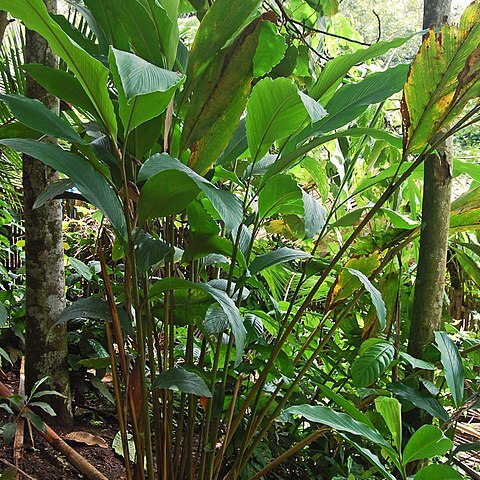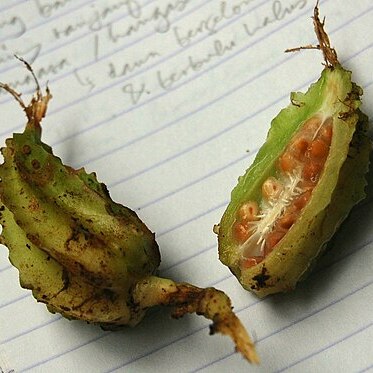Plants 1--3.5 m tall. Ligule orbicular, 2-cleft, 0.4--1.6 cm, rusty villous; petiole 0.5--3 cm; leaf blade adaxially bright green, abaxially whitish, oblong-lanceolate, 50--70 × 5.5--14 cm, adaxially glabrous, abaxially brownish pubescent, base cuneate, apex acuminate. Spikes subglobose, 3--5 cm in diam.; peduncle 2--8 cm; bracts reddish, ovate, ca. 2.5 cm. Calyx 3-lobed at apex; lobes 2-lobed. Corolla tube white, ca. 2.5 cm; lobes white, lanceolate, equaling tube. Lateral staminodes subulate, ca. 2 mm. Labellum white with yellow line along center and radiate, red veins, elliptic, ca. 2.5 cm, apex emarginate. Filament ca. 5 mm; anther ca. 2 mm; connective appendage elliptic, ca. 3 mm. Capsule purple-green, ellipsoid, 2.5--3 × 1--1.2 cm, with 9 crenulate-winged ribs, indehiscent; pedicel 1--2 cm. Fl. May--Jun, fr. Jun--Sep.
More
A ginger family herb. It grows 1-3.5 m tall. The leaves are whitish underneath. They are oblong and 50-70 cm long by 6-14 cm wide. The flower spikes are almost round and 3-5 cm across. The flower tube is white. The fruit is a purple-green capsule that is 3 cm long by 1 cm wide. It has 9 winged ribs.


